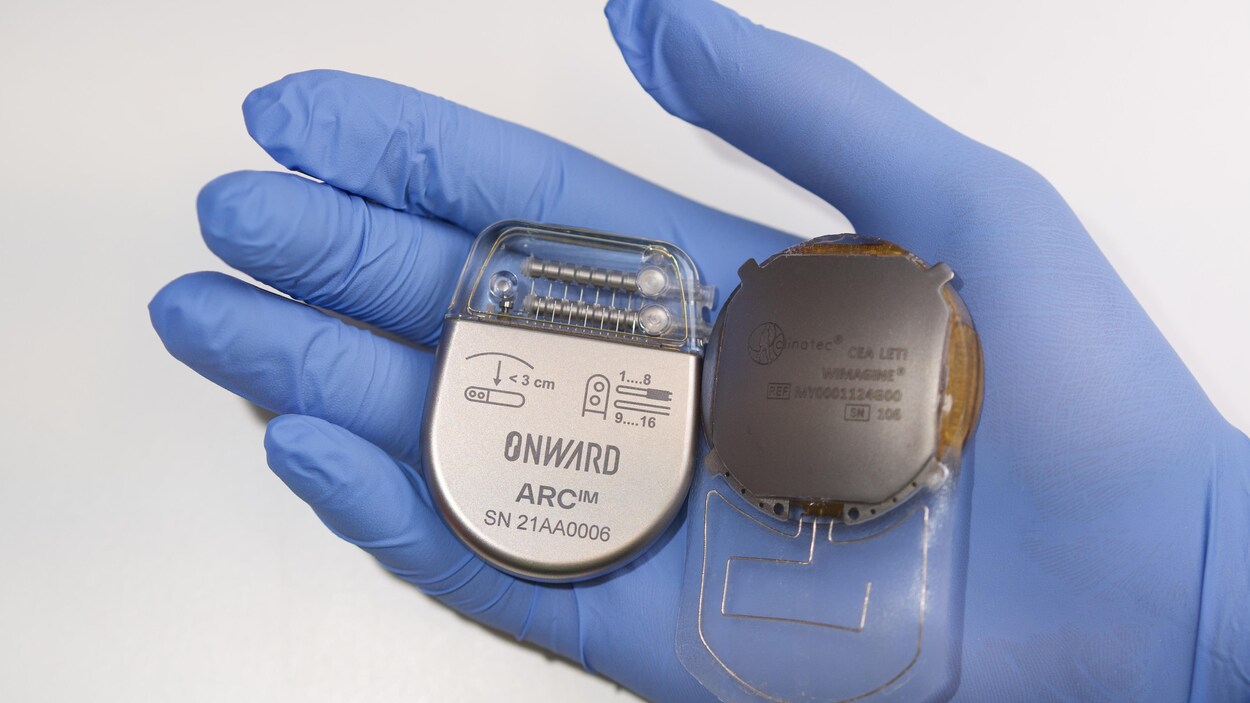For the first time, a brain implant is being tested in conjunction with an implant that stimulates the spinal cord to give a paraplegic patient the opportunity to mentally move his arms, hands and fingers again, said the Dutch company Onward.
The combination of these two technologies had already enabled a paraplegic patient to regain natural control of walking through thought, an advance that was the subject of a publication in the journal Nature in May.
However, this is the first time this double technique has been used for the upper limbs.
Arm mobility is more complex
explained to AFP surgeon Jocelyne Bloch, who performed the implantation operations.
Even compared to walking, there is no balance problem here, The musculature of the hand is quite delicate, with many different small muscles that are activated simultaneously during certain movements
She added.
The patient, who wishes to remain anonymous, is a 46-year-old Swiss man who lost the use of his arms after a fall. Last month, two surgeries took place at the Vaudois University Hospital Center (CHUV) in Lausanne, Switzerland.
The first to place the brain implant developed by the French organization CEA-Clinatech, a few centimeters in diameter, over the brain instead of a small piece of skull bone.
The second is to place the electrodes developed by Onward at the level of the cervical spine and connect them to a small box that is implanted in the abdomen.
The brain implant (or brain-machine interface, BMI) senses the regions of the brain that are activated when the patient thinks about a movement and transmits them to the electrodes. Kind of digital bridge
.
Things are going well at the moment
described Jocelyne Bloch, co-founder of Onward and continued advisor to the company.
We can record brain activity and know that the stimulation is working. […] But it is still too early to talk about what progress he has made and what he is capable of now.
The patient is in the training phase to ensure that the brain implant recognizes the different desired movements. The lost movements then have to be repeated many times before they can become natural. The process will take time some months
said Dr. Bloch.
Two additional patients are scheduled to take part in this study. Full results will be published later.
Spinal cord stimulation has been used in the past to successfully move the arm of paralyzed patients, but without coupling with a brain implant.
And brain implants have already been used to allow a patient to control an exoskeleton.
For its part, the Battelle organization used a brain implant to restore movement in a patient’s arm, but was equipped with an electrode sleeve attached to the forearm that directly stimulated the affected muscles.
Onward is unique in its focus on restoring movement through spinal cord stimulation
paired with a brain implant, his boss Dave Marver told AFP.
According to him, this technology could be commercialized until the end of the decade
.
The brain implant space is booming, with companies like Synchron and Neuralink in the niche. In particular, they are working on enabling paralyzed patients to control computers through their minds and, for example, giving them back the ability to write.

Extreme problem solver. Professional web practitioner. Devoted pop culture enthusiast. Evil tv fan.




;Composite=(type=URL,url=https://images.radio-canada.ca/v1/assets/elements/16x9/outdated-content-2021.png),gravity=SouthEast,placement=Over,location=(0,0),scale=1)


